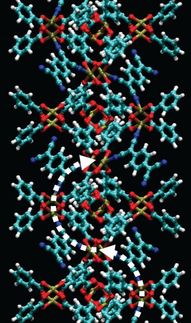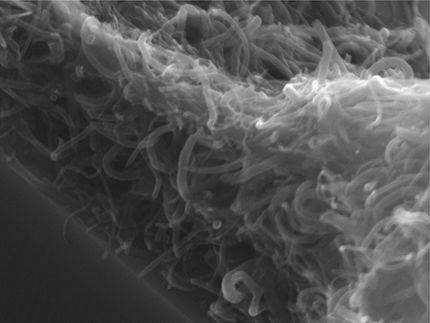Argonne scientists discover mechanism behind superinsulation
Discovery may lead to new types of electronics
Scientists at the U.S. Department of Energy's Argonne National Laboratory have discovered the microscopic mechanism behind the phenomenon of superinsulation, the ability of certain materials to completely block the flow of electric current at low temperatures. The essence of the mechanism is what the authors termed "multi-stage energy relaxation."
Traditionally, energy dissipation accompanying current flow is viewed as disadvantageous, as it transforms electricity into heat and thus results in power losses. In arrays of tunnel junctions that are the basic building units of modern electronics, this dissipation permits the generation of current.
Argonne scientist Valerii Vinokour, along with Russian scientists Tatyana Baturina and Nikolai Chtchelkatchev, found that at very low temperatures the energy transfer from tunneling electrons to the thermal environment may occur in several stages.
“First, the passing electrons lose their energy not directly to the heat bath; they transfer their energy to electron-hole plasma, which they generate themselves,” Vinokour said. “Then this plasma 'cloud' transforms the acquired energy into the heat. Thus, tunneling current is controlled by the properties of this electron-hole cloud.”
As long as the electrons and holes in the plasma cloud are able to move freely, they can serve as a reservoir for energy — but below certain temperatures, electrons and holes become bound into pairs. This does not allow for the transfer of energy from tunneling electrons and impedes the tunneling current, sending the conductivity of the entire system to zero.
“Electron-hole plasma disappears from the game and electrons cannot generate the energy exchange necessary for tunneling,” Vinokour said.
Because the current transfer in thin films and granular systems that exhibit superinsulating behavior relies on electron tunneling, the multistage relaxation explains the origin of the superinsulators.
Superinsulation is the opposite of superconductivity; instead of a material that has no resistivity, a superinsulator has a near-infinite resistance. Integration of the two materials may allow for the creation of a new class of quantum electronic devices. This discovery may one day allow researchers to create super-sensitive sensors and other electronic devices.
Most read news
Organizations
Other news from the department science

Get the chemical industry in your inbox
From now on, don't miss a thing: Our newsletter for the chemical industry, analytics, lab technology and process engineering brings you up to date every Tuesday and Thursday. The latest industry news, product highlights and innovations - compact and easy to understand in your inbox. Researched by us so you don't have to.
Most read news
More news from our other portals
See the theme worlds for related content
Topic world Sensor technology
Sensor technology has revolutionized the chemical industry by providing accurate, timely and reliable data across a wide range of processes. From monitoring critical parameters in production lines to early detection of potential malfunctions or hazards, sensors are the silent sentinels that ensure quality, efficiency and safety.

Topic world Sensor technology
Sensor technology has revolutionized the chemical industry by providing accurate, timely and reliable data across a wide range of processes. From monitoring critical parameters in production lines to early detection of potential malfunctions or hazards, sensors are the silent sentinels that ensure quality, efficiency and safety.





























































